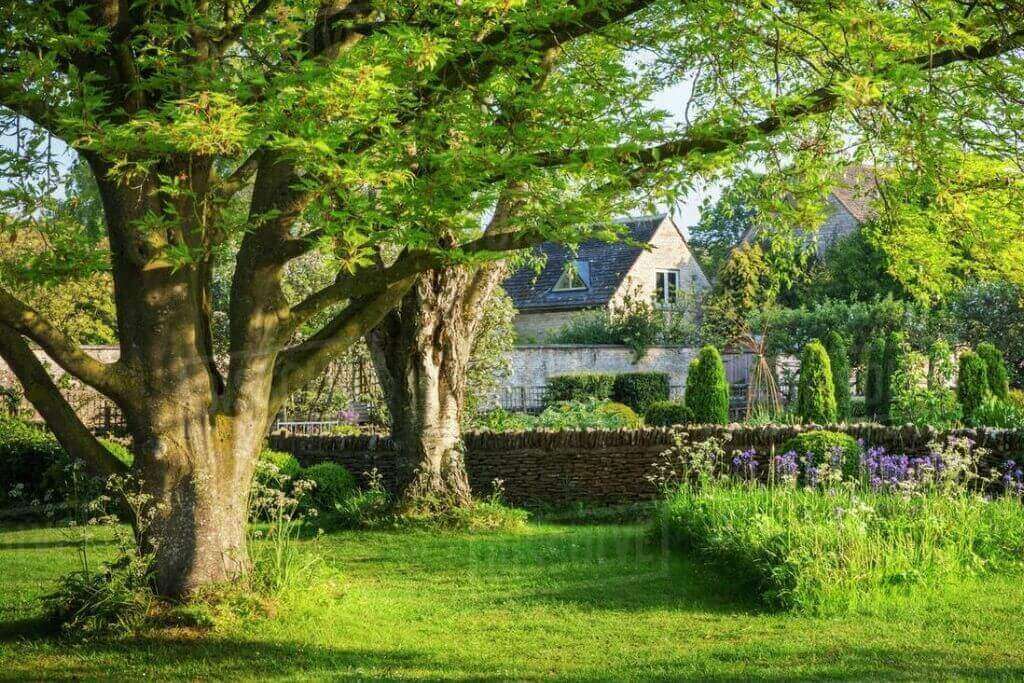
A good quality, mature tree can be responsible for up to 10% of your property’s value, according to House Logic.
However, that’s not a reason to keep hold of your trees. Each year, trees cause thousands of dollars worth of damage.
So, it’s crucial that you keep a close eye on your trees so you can determine whether they can be saved or if they need to be chopped down.
Trees To Be wary
Some of the most common garden trees are also some of the biggest problem trees.
If you have any of the following trees in your garden, keep a close eye on them and consider felling them if they become too troublesome:
- Willow – their roots spread out wide and can cause significant damage.
- Beech – have stubborn roots which are prone to attacking underground pipes.
- Mulberry – actively seek out moisture, so act fast if there’s a water leak or similar in or by your property.
- Ash – needs to be regularly inoculated to prevent emerald ash borers causing damage.
- Cottonwood – sheds a significant amount of debris which will clutter up your garden.
- Eastern white pine – they are known for being one of the messiest trees due to the debris that they shed. They also drop a sticky pitch that causes staining.
- Eucalyptus – they have very shallow roots which grow fast and can cause problems in your garden. They’re also known for being particularly messy.
Problematic trees
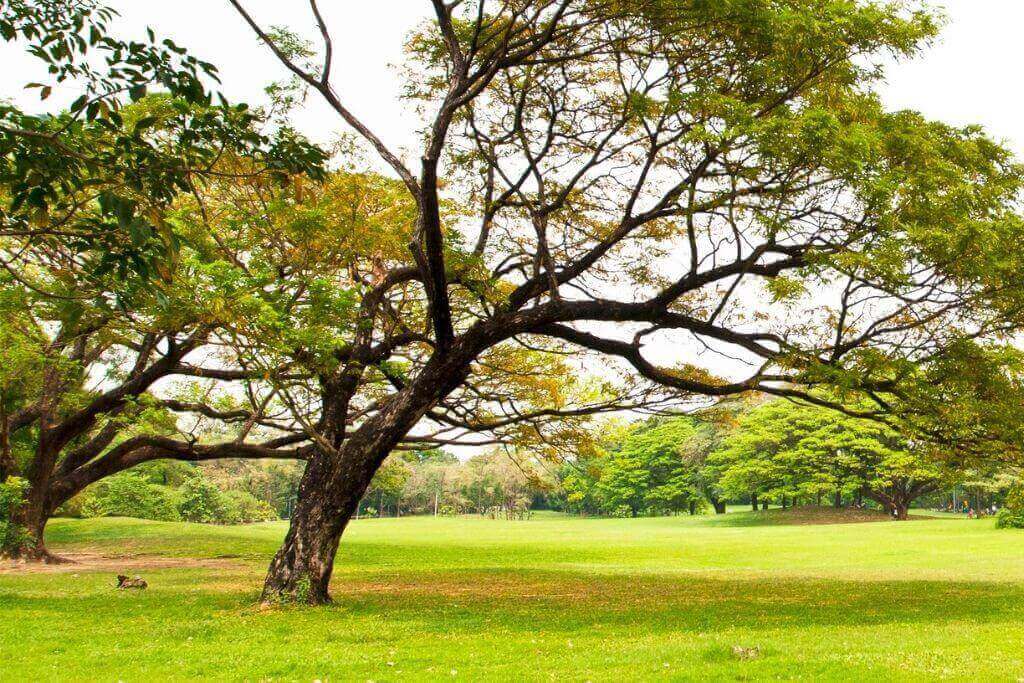
Many trees naturally grow at a slight angle. As a general rule, so long as the tree has always had a tilt, your tree is fine.
If the tree has suddenly leant to the side or has gradually started leaning closer to the ground, it’s likely that there’s a problem with the tree and it needs to be removed.
This is because it has probably developed a dangerous structural issue that can cause a tree to spontaneously uproot.
Trees with two trunks are also a risk as they are weaker and not able to support themselves as well as a single trunk tree.
Often, the joint between the two trunks will develop cracks and split. This is when the tree becomes the biggest danger as bad weather could cause the tree to fall down.
The best option for this type of tree is to remove it and replace it with a new one.
Diseases & bugs
It’s common for trees to develop diseases due to stress, damage, overcrowding, bad weather, and fungus. Diseases can occur anywhere on the tree, including the roots, pines, bark, and leaves.
Bark falling off the trunk of a tree is a sign that the trunk is infected and cannot be saved. Whereas, yellow-spots, leaf rusts, and powdery mildew are signs that fungi is present.
Other signs that a disease is present in your tree include discoloration, defoliation, and dead needles. If the roots are affected, it will typically kill the tree slowly over many years.
Therefore, it can be a tricky problem to identify but you should look out for discoloration, stunted growth, weak branches, and foliage thinning.
Bugs, insects, and pests can also destroy trees by attacking them. Some will burrow into the tree, damaging it in the process.
Others will chew or suck on the foliage, affecting its health and overall appearance.
Bugs and pests to be on the lookout for include gypsy moths which leave masses of eggs behind, emerald ash borers which leave ‘S’ and ‘D’ shaped marks on trees, and aphids which leave their mark in the form of honeydew.
Dangerous trees
Another sign that your tree is a problem is that it’s located too close to your property. For safety reasons, all trees should be at least 15 feet away from the foundations of a building.
If you’ve got a tree that’s closer to your home than this, it’s an issue as if it fell down it could cause significant damage to your property.
Overhanging trees are also a nuisance, especially if they’re brushing against your home.
Leaves and other debris from the tree can block up your gutters and drainage system and lead to a leak, mold growth, and similar issues.
Perhaps, one of the biggest risks associated with a tree being located too close to your property is that when its roots grow, they can damage the foundations of your home, your garden, driveway, and similar.
Saving a tree
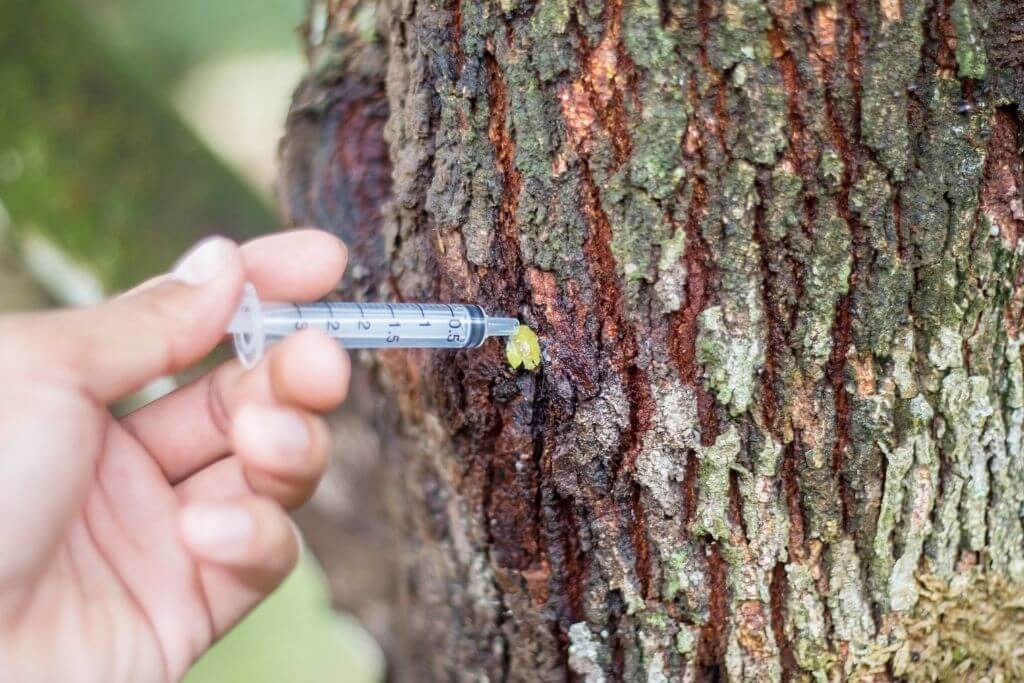
Trees die, become diseased, or develop structural problems for many reasons. In some cases you can save a tree in such a condition.
Dehydration can cause a tree to die, so check that the tree is getting enough nourishment from the nearby soil.
It’s recommended that mature trees are watered twice per month. 10 gallons of water per inch of the trunk is the suggested amount.
Removing 30% of the tree’s branches and leaves can also save a dying tree. By reducing the overall size of the tree, the tree will focus its attention on getting the right nutrients to the rest of the tree, thus giving it the best chance of survival.
One of the other key things you can do to save a tree is fertilize it. Where possible, avoid using shop-bought fertilizers as these contain chemicals that may cause more harm than good. Instead, a natural fertilizer such as horse manure should be applied.
Felling a tree
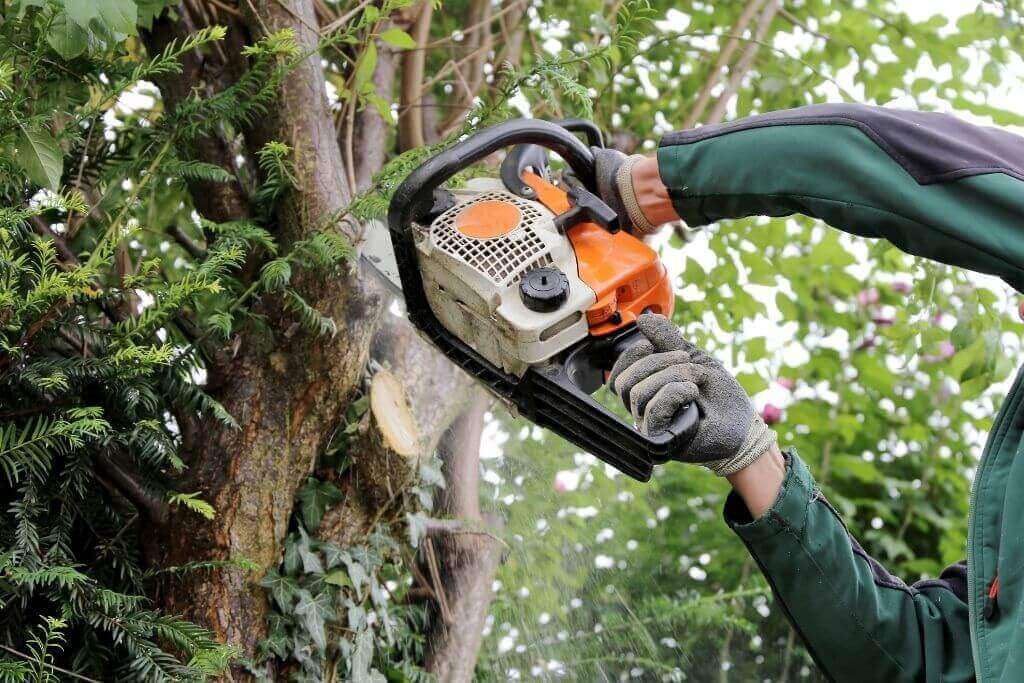
If your tree hasn’t had a new lease of life after following the above tips, or it’s simply not safe to keep your tree in your garden, it needs felling.
If you’re ever unsure whether a tree in your garden needs felling, call a local arborist or tree surgeon to guide you.
They’ll be able to give you the best advice as to what the problem is and whether felling will solve it. Where possible, felling should be done between the end of winter and early spring as trees are easier to handle at this time.
However, if the tree is an immediate danger, it’s best to fell it straight away. The process of felling usually involves the tree being cut down with a chainsaw.
In most cases, the tree will be cut down so that it falls the way that it is leaning, but if it isn’t safe to do so, an experienced arborist will fell it against the lean.
After the tree has been felled, the branches will be removed and can be used for things such as firewood. From there, the stump should be removed because it will stop the tree from forming new roots and becoming a whole new problem.
It can be difficult to tell whether your tree is a problem or not. Hopefully, this guide will tell you all you need to know about problems and saving trees so you can make the best decision for your garden.

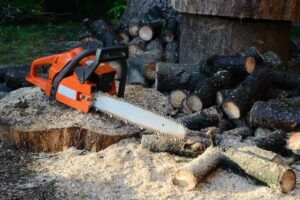
![9 Best Pole Saws of 2023 [Ultimate Guide] 9 Best Pole Saws of 2023 [Ultimate Guide]](https://handykeen.b-cdn.net/wp-content/uploads/2021/03/best-pole-saw-300x200.jpg)
![How To Start A Woodworking Business [Ultimate Guide] How To Start A Woodworking Business [Ultimate Guide]](https://handykeen.b-cdn.net/wp-content/uploads/2021/10/woodworking-business-1-300x200.jpg)


